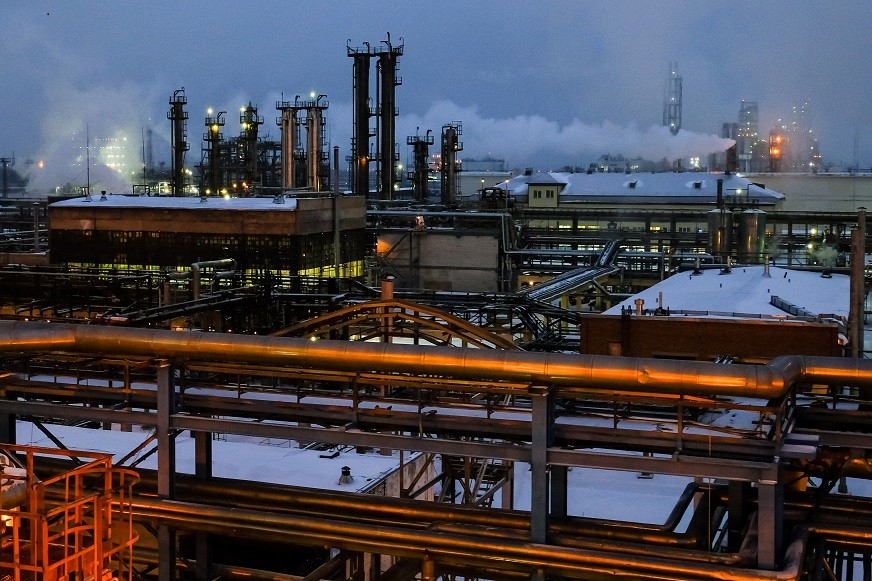Aug 28 2020
Researchers have identified a formerly unknown method through which certain bacteria create the chemical ethylene—a discovery that could pave the way for producing plastics without using fossil fuels.
 Ethylene production plants like this one may one day use bacteria rather than fossil fuels. Image Credit: The Ohio State University.
Ethylene production plants like this one may one day use bacteria rather than fossil fuels. Image Credit: The Ohio State University.
Recently published in the Science journal on August 27th, 2020, the study demonstrated that the microorganisms produced ethylene gas as a byproduct of metabolizing sulfur, which they require for their survival.
However, according to Justin North, the study’s lead author and a research scientist in microbiology at The Ohio State University, the process used by the bacteria to do that could render it highly useful in manufacturing.
We may have cracked a major technological barrier to producing a large amount of ethylene gas that could replace fossil fuel sources in making plastics. There’s still a lot of work to do to develop these strains of bacteria to produce industrially significant quantities of ethylene gas. But this opens the door.
Justin North, Study Lead Author and Research Scientist in Microbiology, The Ohio State University
The team from The Ohio State University worked on the new study with collaborators from Colorado State University, Oak Ridge National Laboratory, and the Pacific Northwest National Laboratory.
According to North, the chemical sector extensively uses ethylene to make almost all kinds of plastics. Ethylene has been utilized more than any other organic compound in manufacturing.
At present, oil or natural gas is used for producing ethylene. While other scientists have identified microorganisms that can also produce ethylene, there had been a technological hurdle to using this chemical—the requirement for oxygen as part of the procedure, stated Robert Tabita, the study’s senior author and professor of microbiology from The Ohio State University.
Oxygen plus ethylene is explosive, and that is a major hurdle for using it in manufacturing. But the bacterial system we discovered to produce ethylene works without oxygen and that gives us a significant technological advantage.
Robert Tabita, Study Senior Author and Professor of Microbiology, The Ohio State University
Tabita is also an Ohio Eminent Scholar.
The finding was made in Tabita’s laboratory at The Ohio State University when scientists were analyzing the Rhodospirillum rubrum bacteria. The team observed that the bacteria were getting the sulfur they required to grow from methylthio ethanol.
We were trying to understand how the bacteria were doing this, because there were no known chemical reactions for how this was occurring.
Justin North, Study Lead Author and Research Scientist in Microbiology, The Ohio State University
That was the time when North decided to observe the kind of gases being produced by the bacteria—and identified that ethylene gas was one of them.
In association with collaborators from Colorado State University and the two national laboratories, North, Tabita, and other collaborators from The Ohio State University successfully identified the formerly unknown process that discharged the sulfur required by the bacteria, together with what North termed the “happy byproduct” of ethylene.
There is more: The team also noted that dimethyl sulfide was being used by the bacteria to make methane—a powerful greenhouse gas.
North added that the entire study was carried out in the laboratory; hence, it remains to be seen how common this process is in the actual setting.
However, the team has identified one scenario in which this recently identified process of ethylene production may have real-life impacts.
Ethylene is a crucial natural plant hormone that, in the correct proportions, is integral to the growth and health of plants. However, high quantities of this hormone are also dangerous to the growth of plants, stated Kelly Wrighton, the study’s co-author and associate professor of soil and crop science from Colorado State University.
“This newly discovered pathway may shed light on many previously unexplained environmental phenomena, including the large amounts of ethylene that accumulates to inhibitory levels in waterlogged soils, causing extensive crop damage,” stated Wrighton.
North added, “Now that we know how it happens, we may be able to circumvent or treat these problems so that ethylene doesn’t accumulate in soils when flooding occurs.”
According to Tabita, this research is the outcome of a happy accident.
“This study, involving the collaborative research and expertise of two universities and two national laboratories, is a perfect example of how serendipitous findings often lead to important advances. Initially, our studies involved a totally unrelated research problem that had seemingly no relationship to the findings reported here,” added Tabita.
While exploring the function of one specific protein in bacteria sulfur metabolism, the team observed that a completely different set of proteins was surprisingly involved as well. This resulted in the discovery of new metabolic reactions and the unanticipated production of huge quantities of ethylene.
“It was a result we could not predict in a million years. Recognizing the industrial and environmental significance of ethylene, we embarked on these cooperative studies, and subsequently discovered a completely novel complex enzyme system. Who would have believed it?” Tabita concluded.
The Department of Energy’s Office of Science, the National Cancer Institute, and the National Science Foundation funded this study.
Other co-authors of the study were Kathryn Byerly, Guanqi Zhao, Sarah Young, Srividya Murali, and John Wildenthal from The Ohio State University; Adrienne Narrowe from Colorado State; Weili Xiong and Robert Hettich from the Oak Ridge National Laboratory; and William Cannon from the Pacific Northwest National Laboratory.
Journal Reference:
North, J. A., et al. (2020) A nitrogenase-like enzyme system catalyzes methionine, ethylene, and methane biogenesis. Science. doi.org/10.1126/science.abb6310.